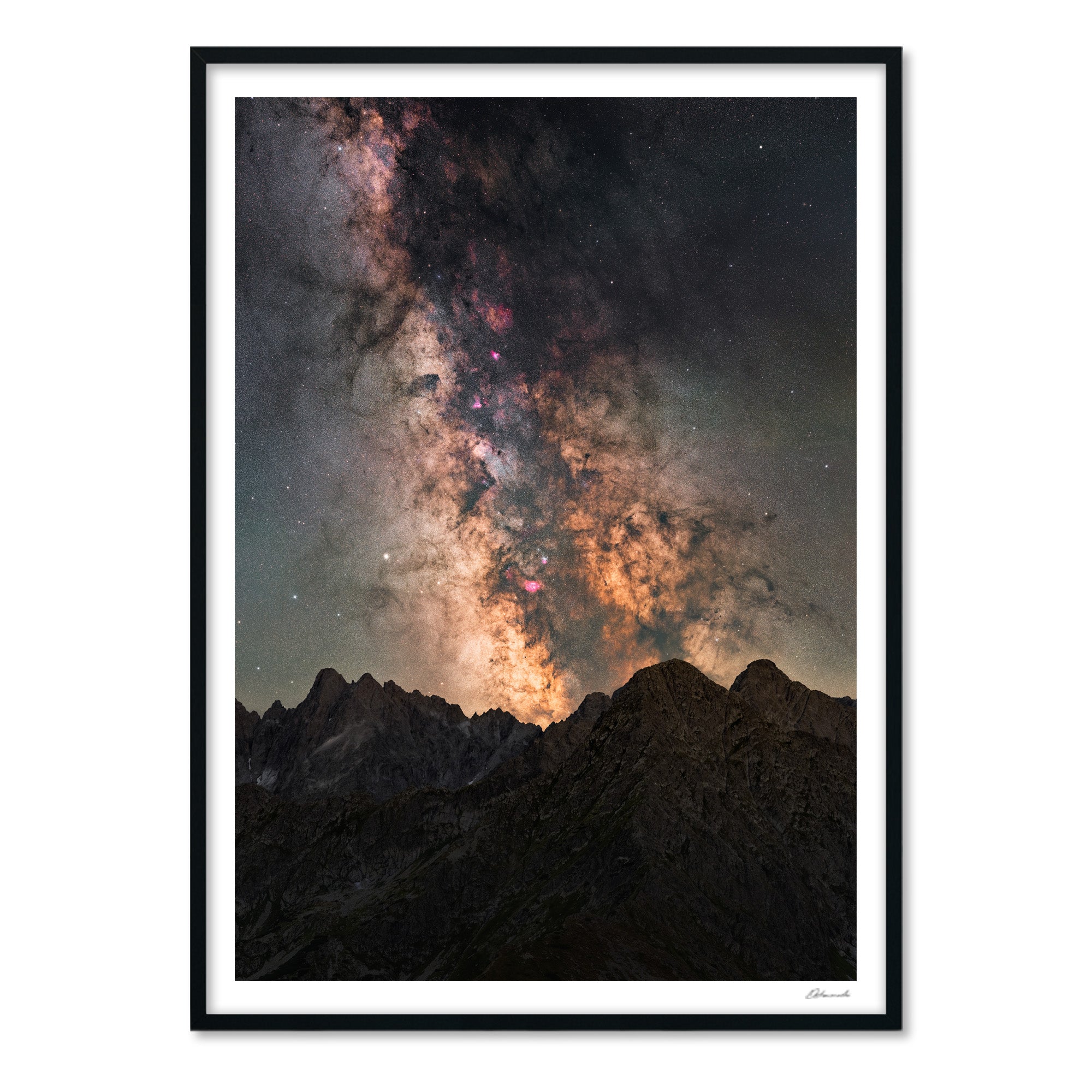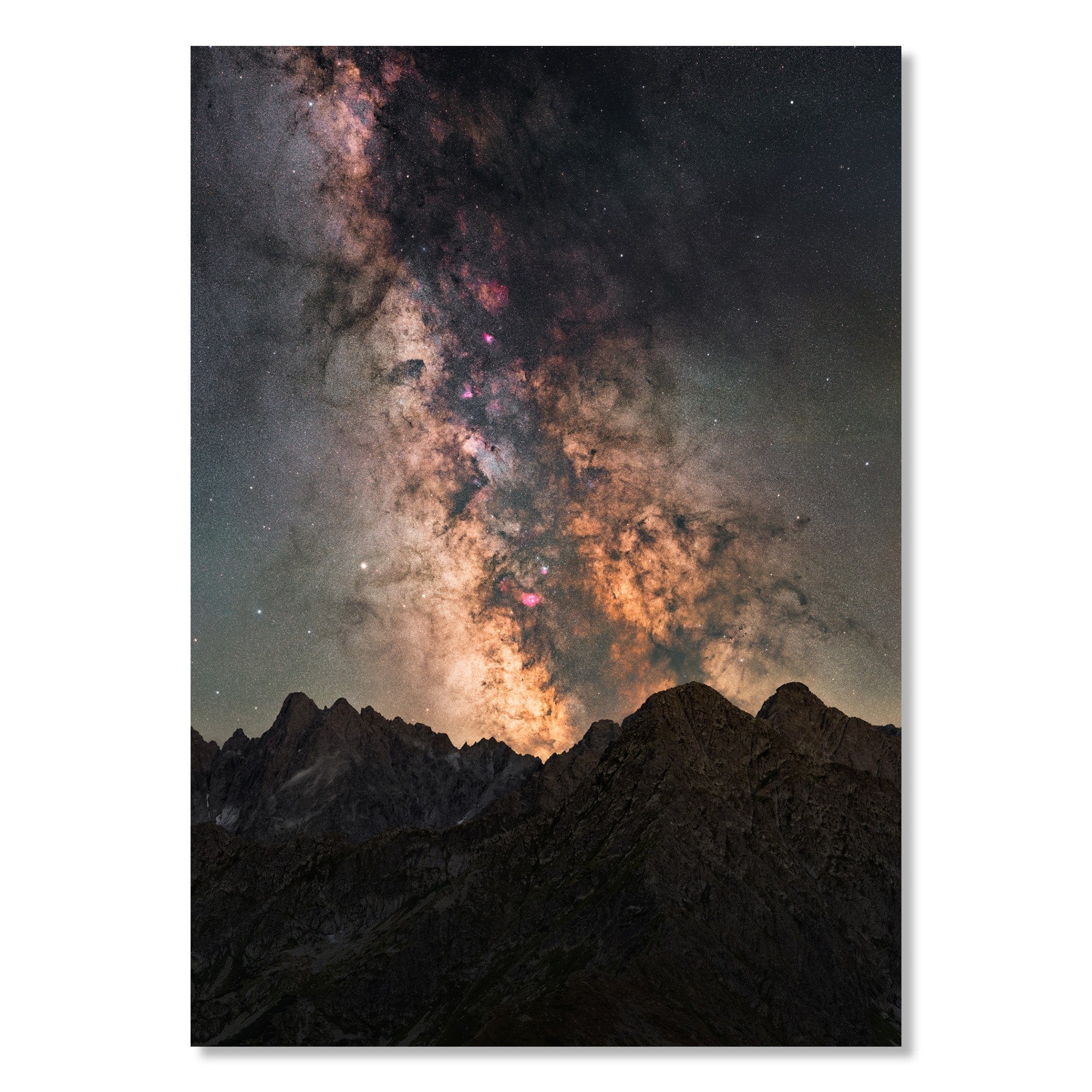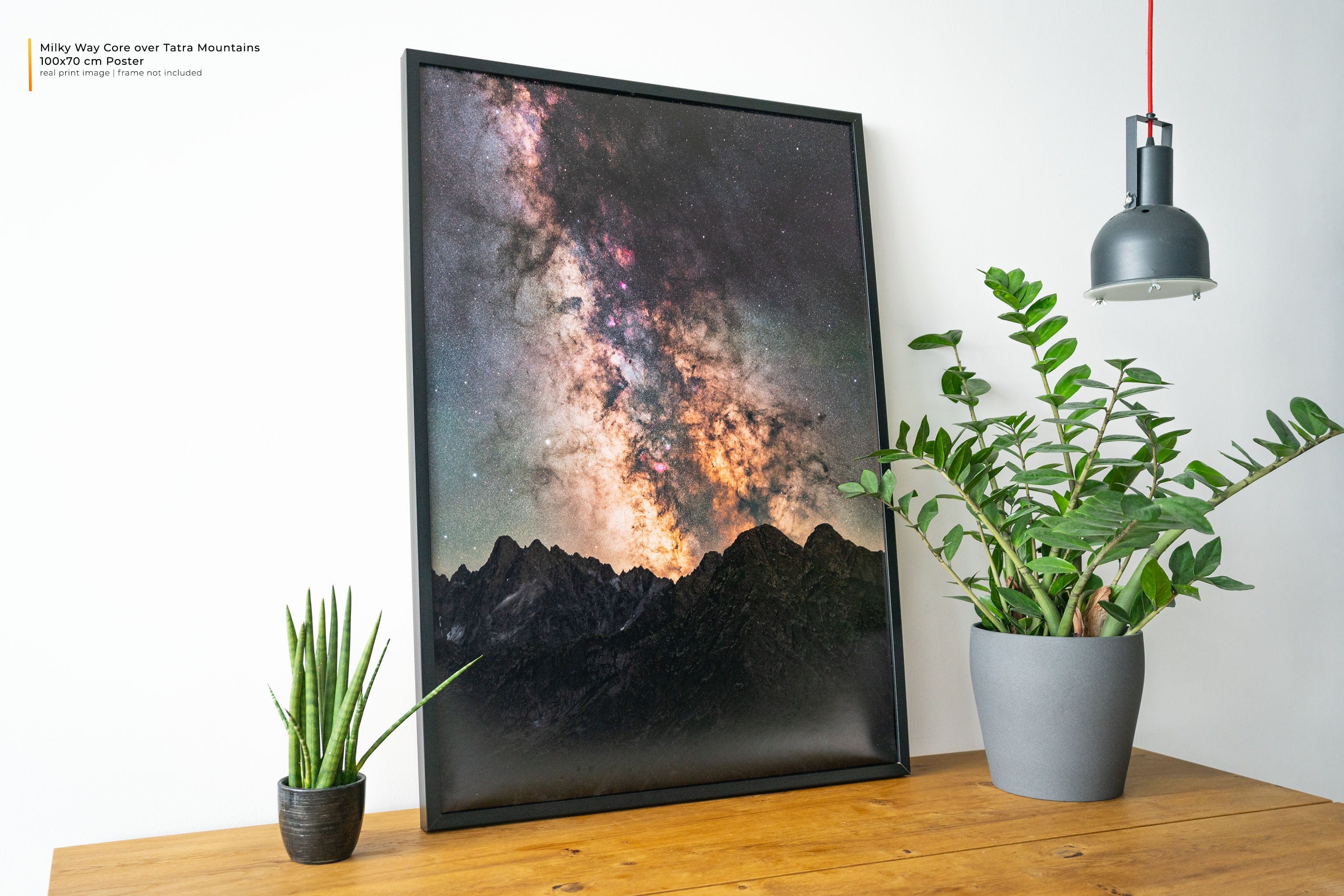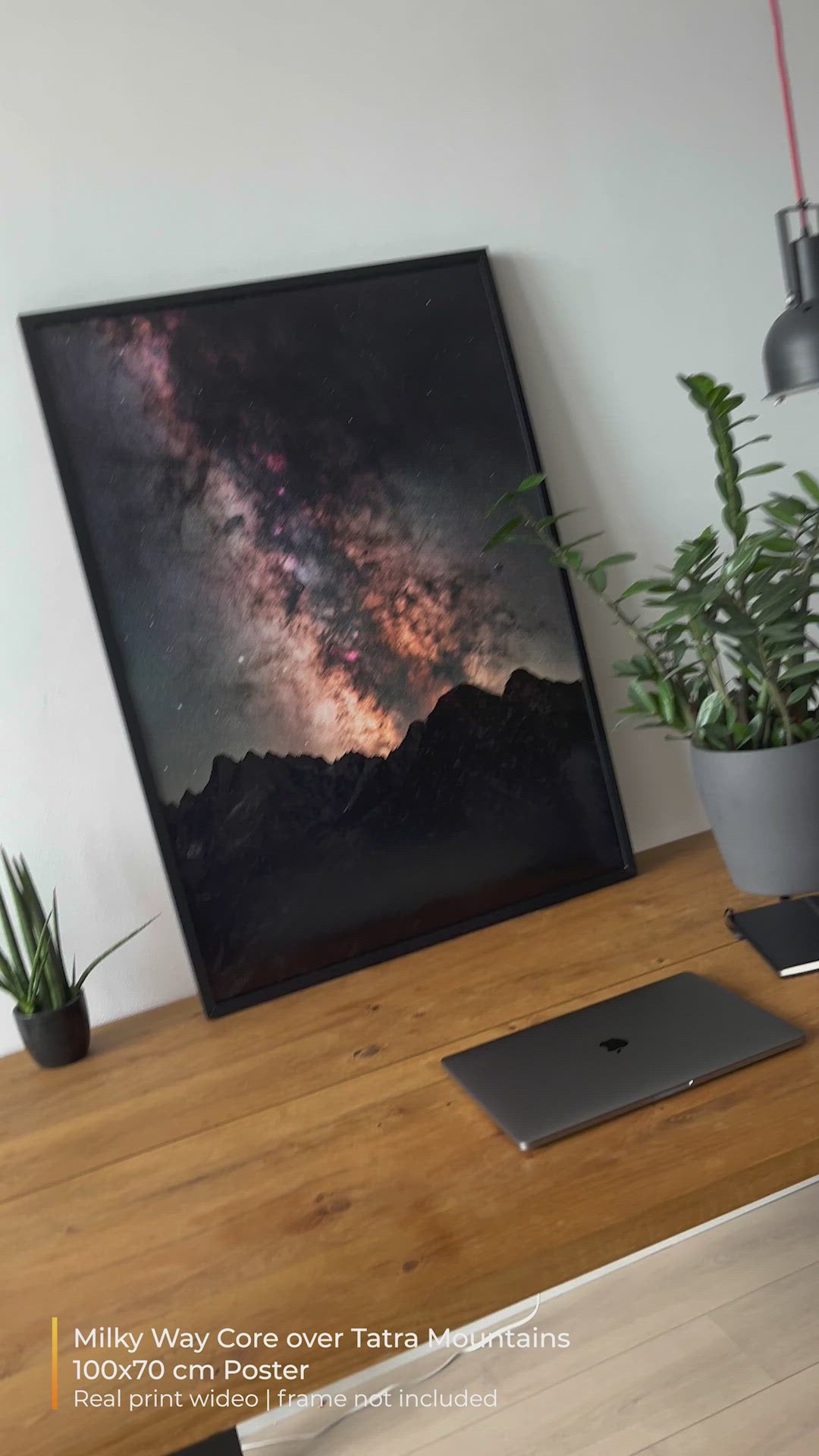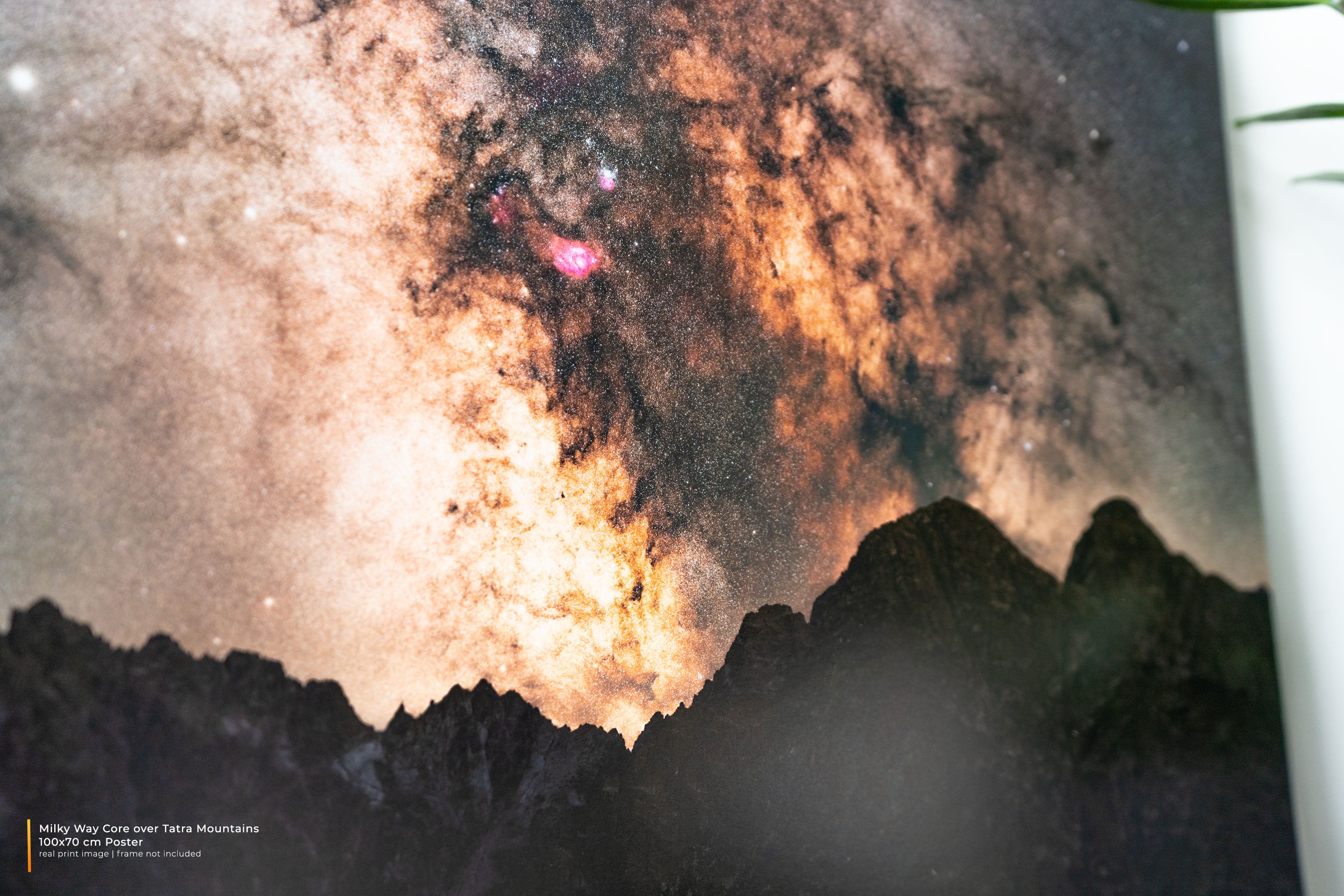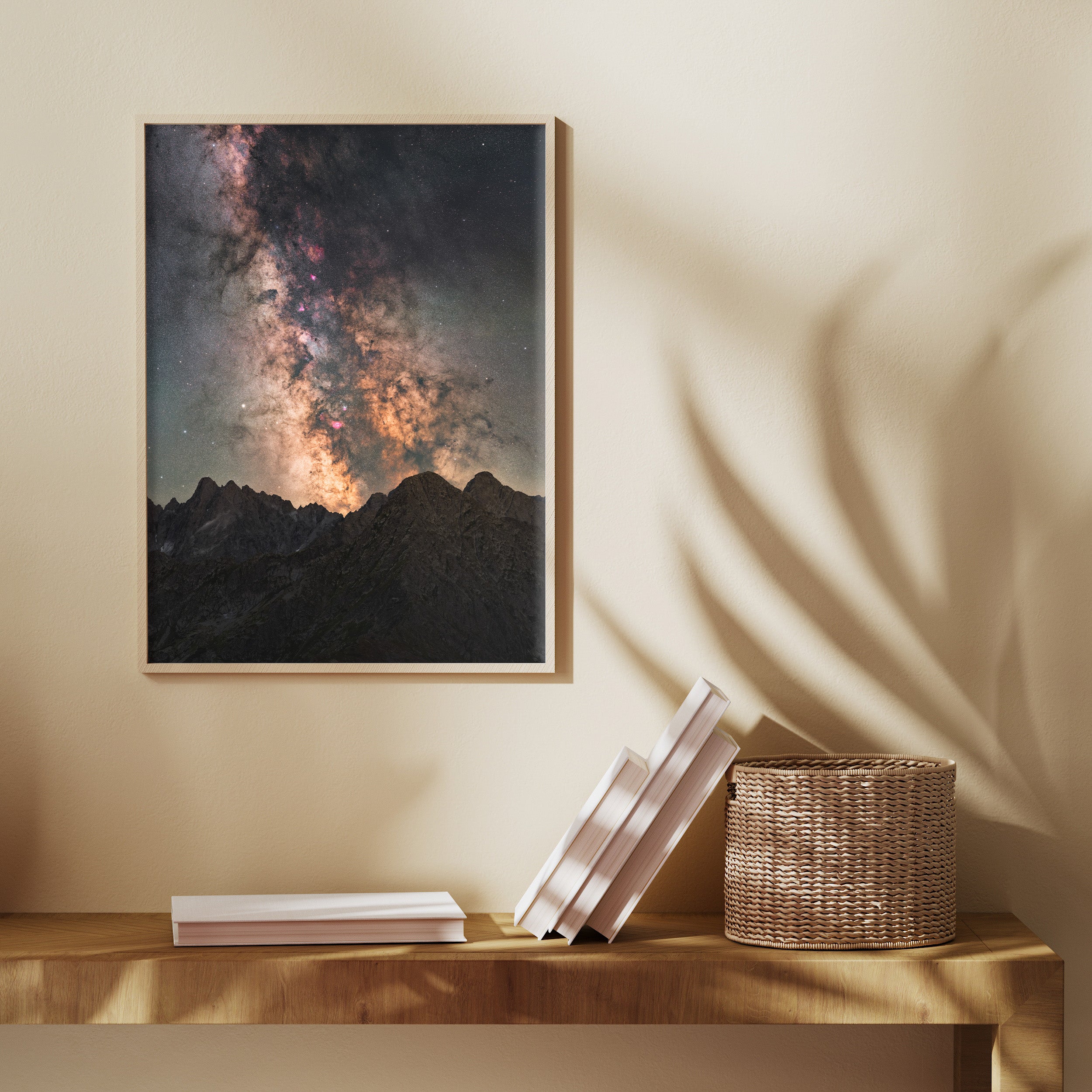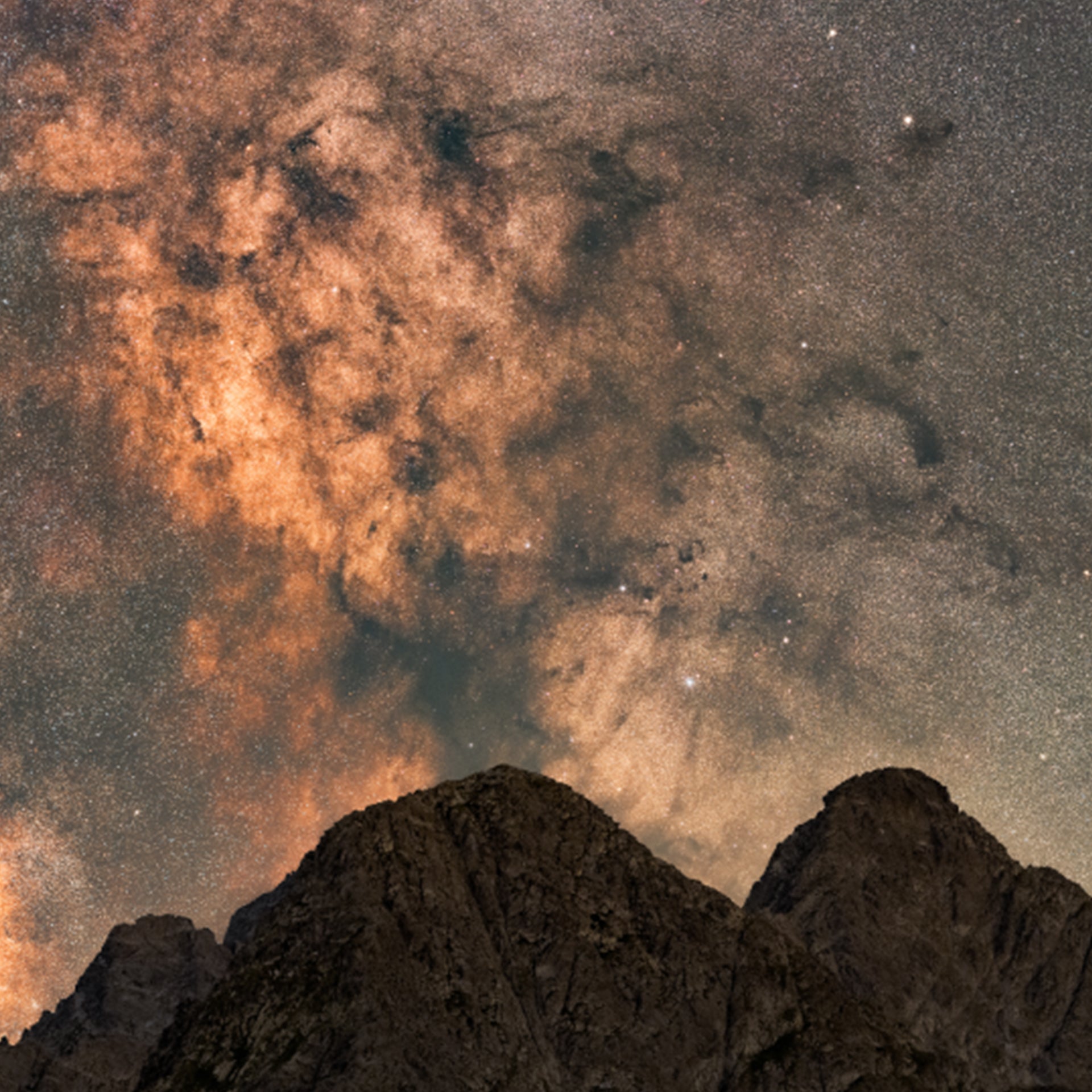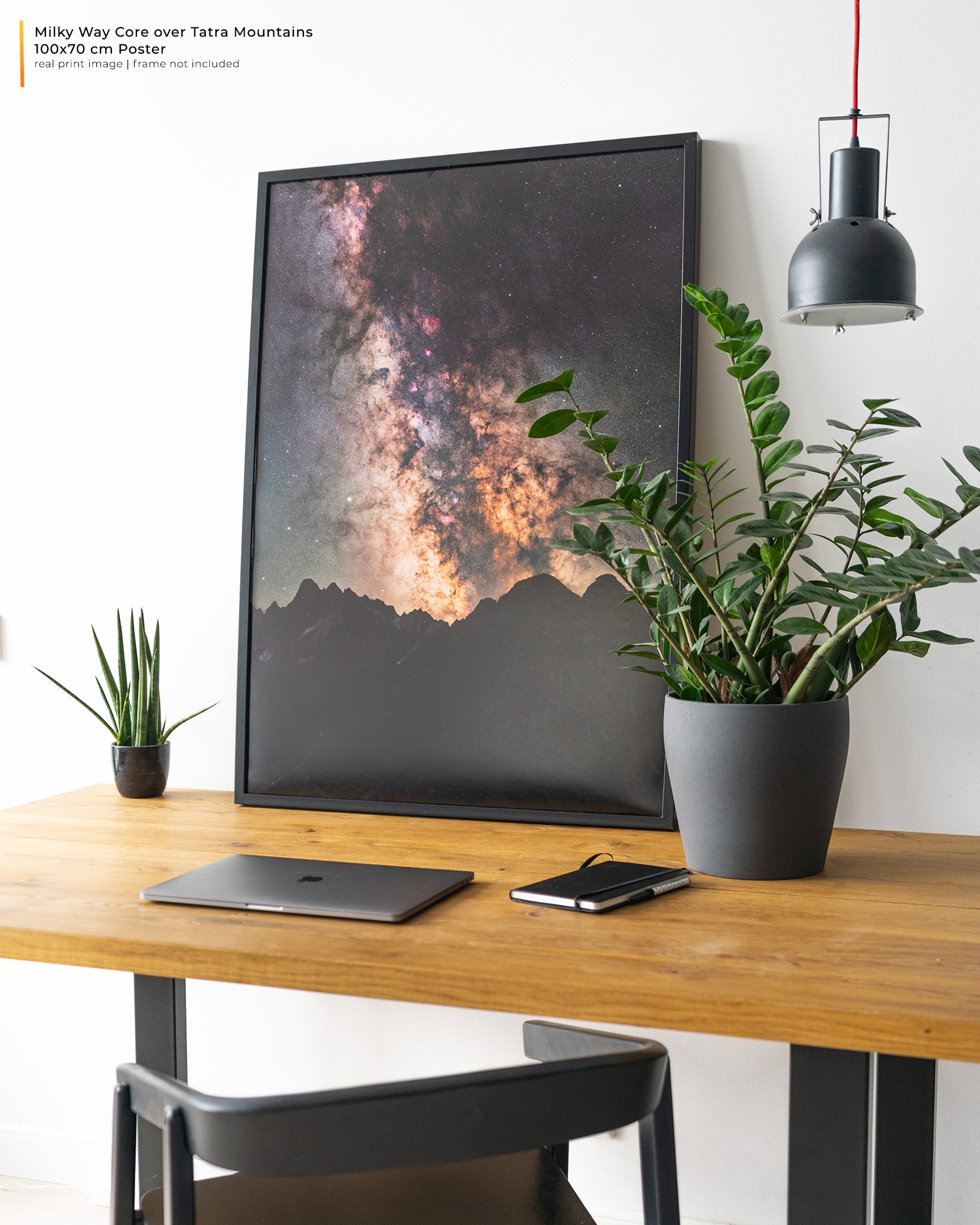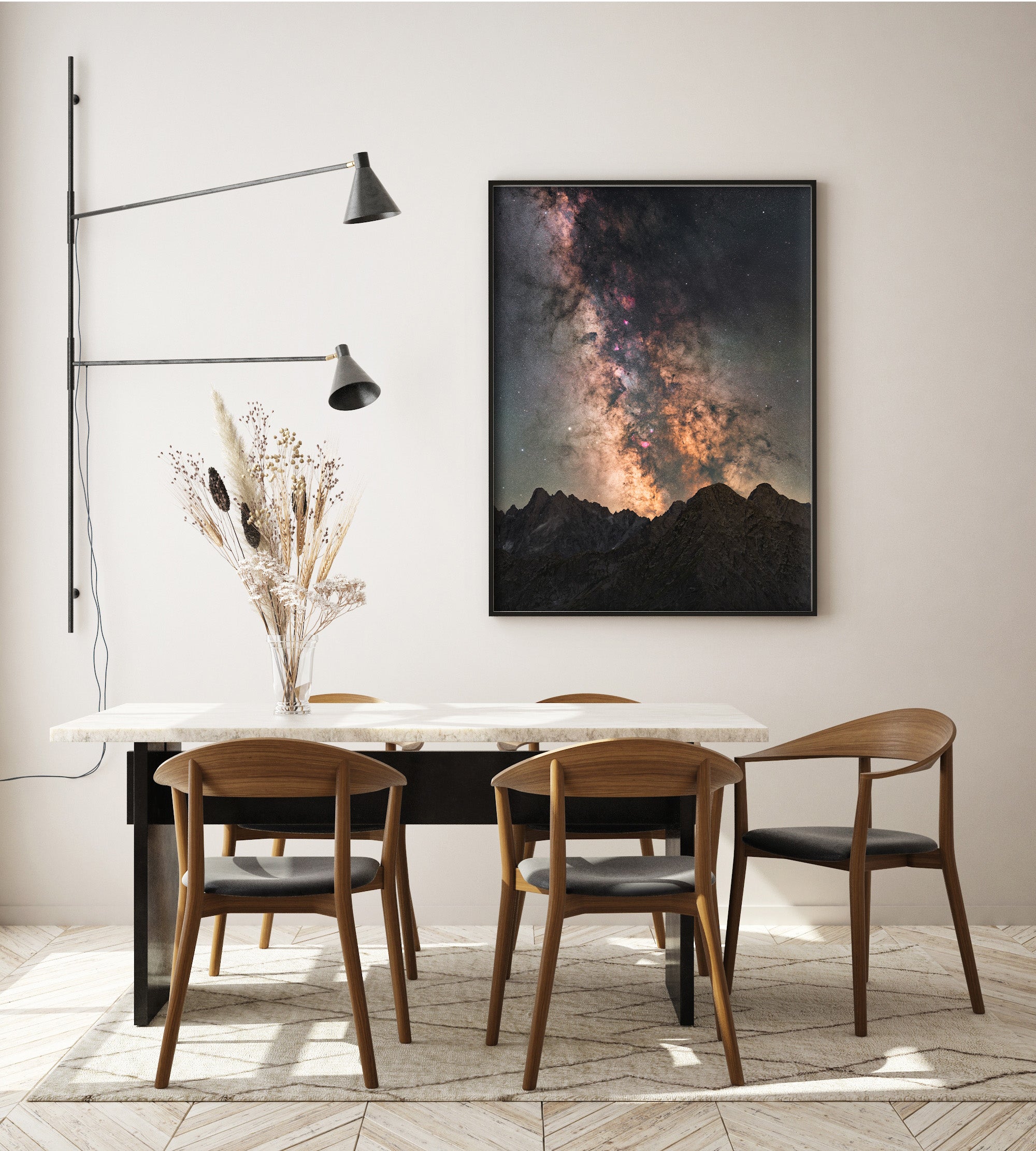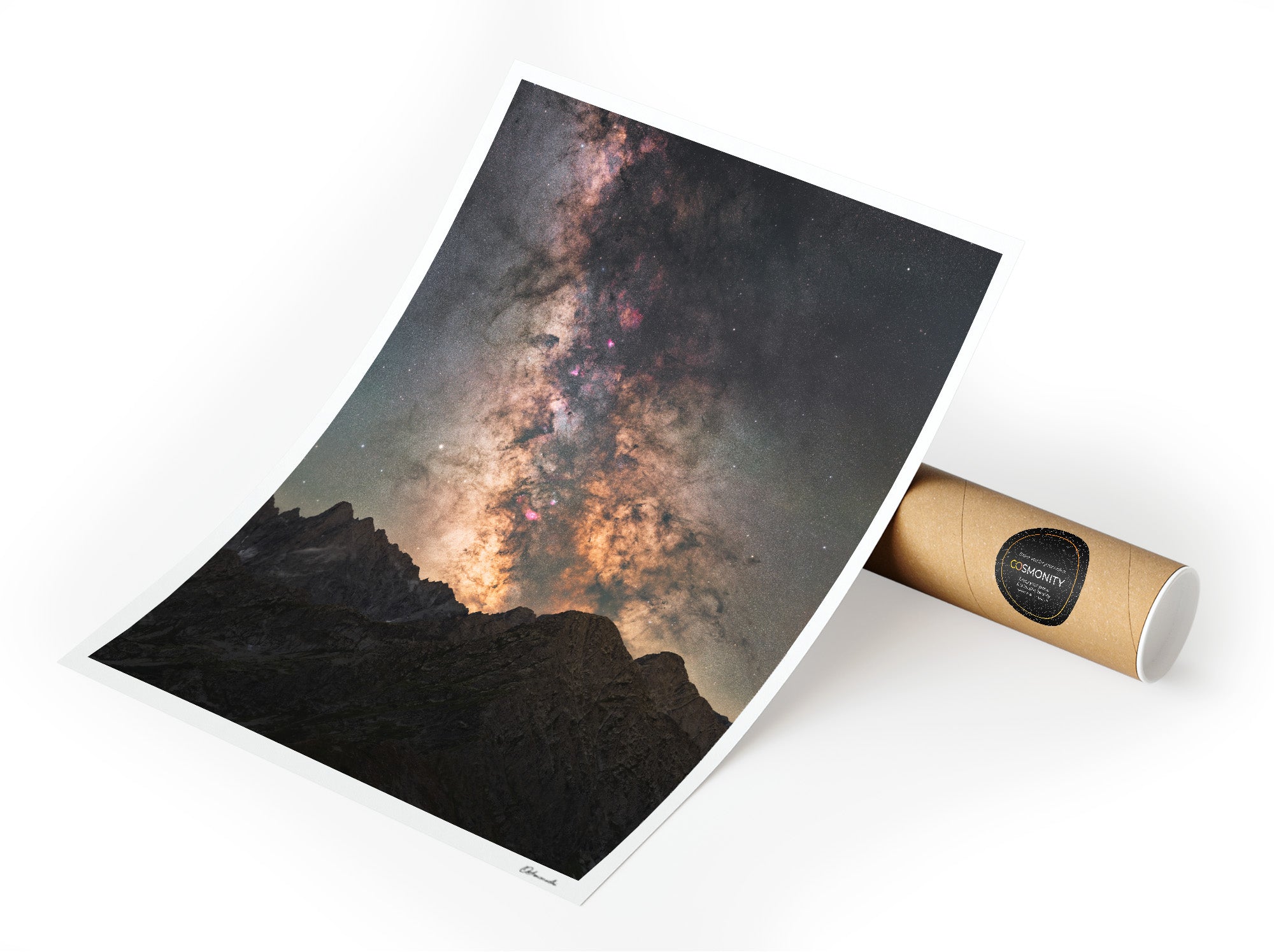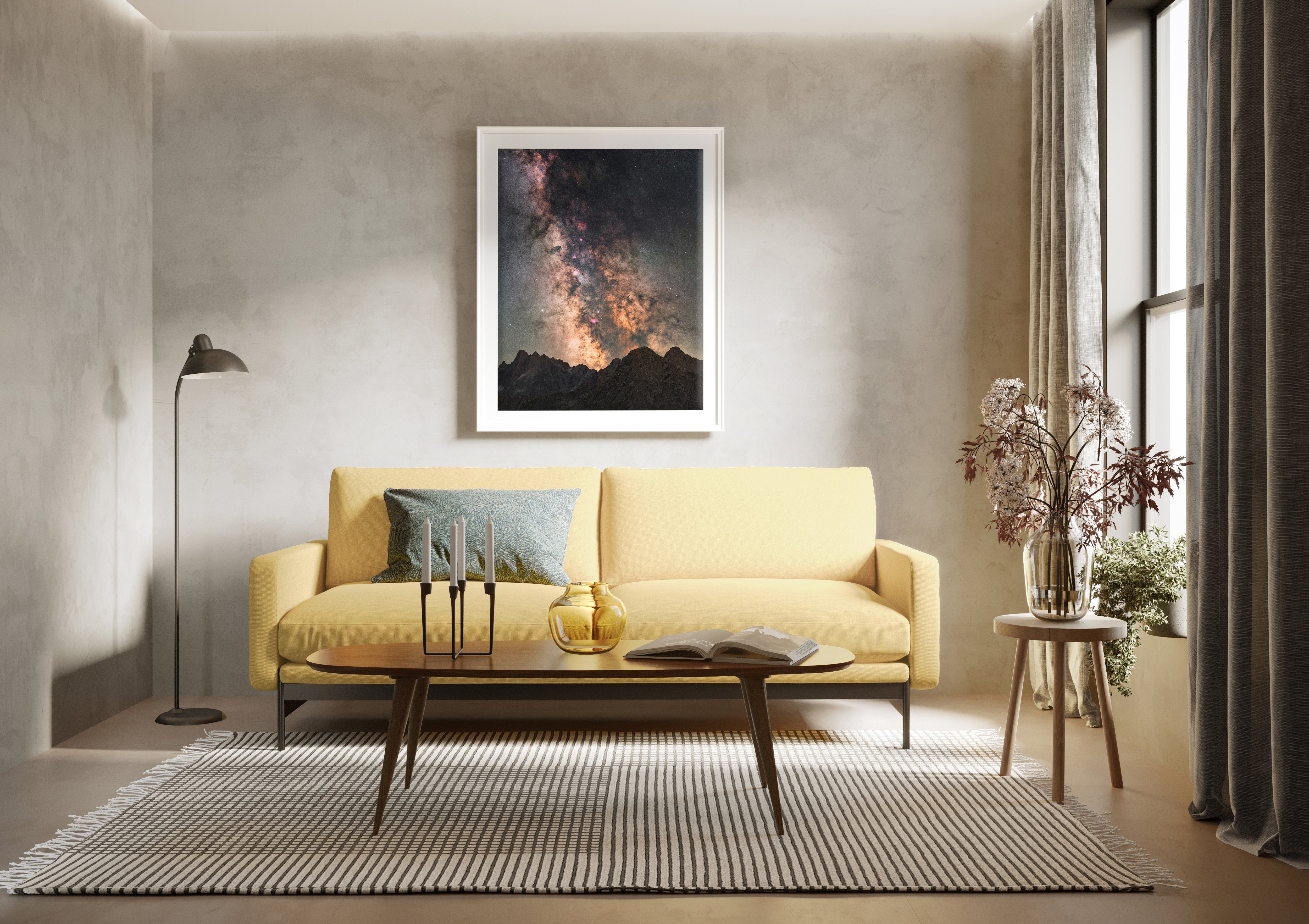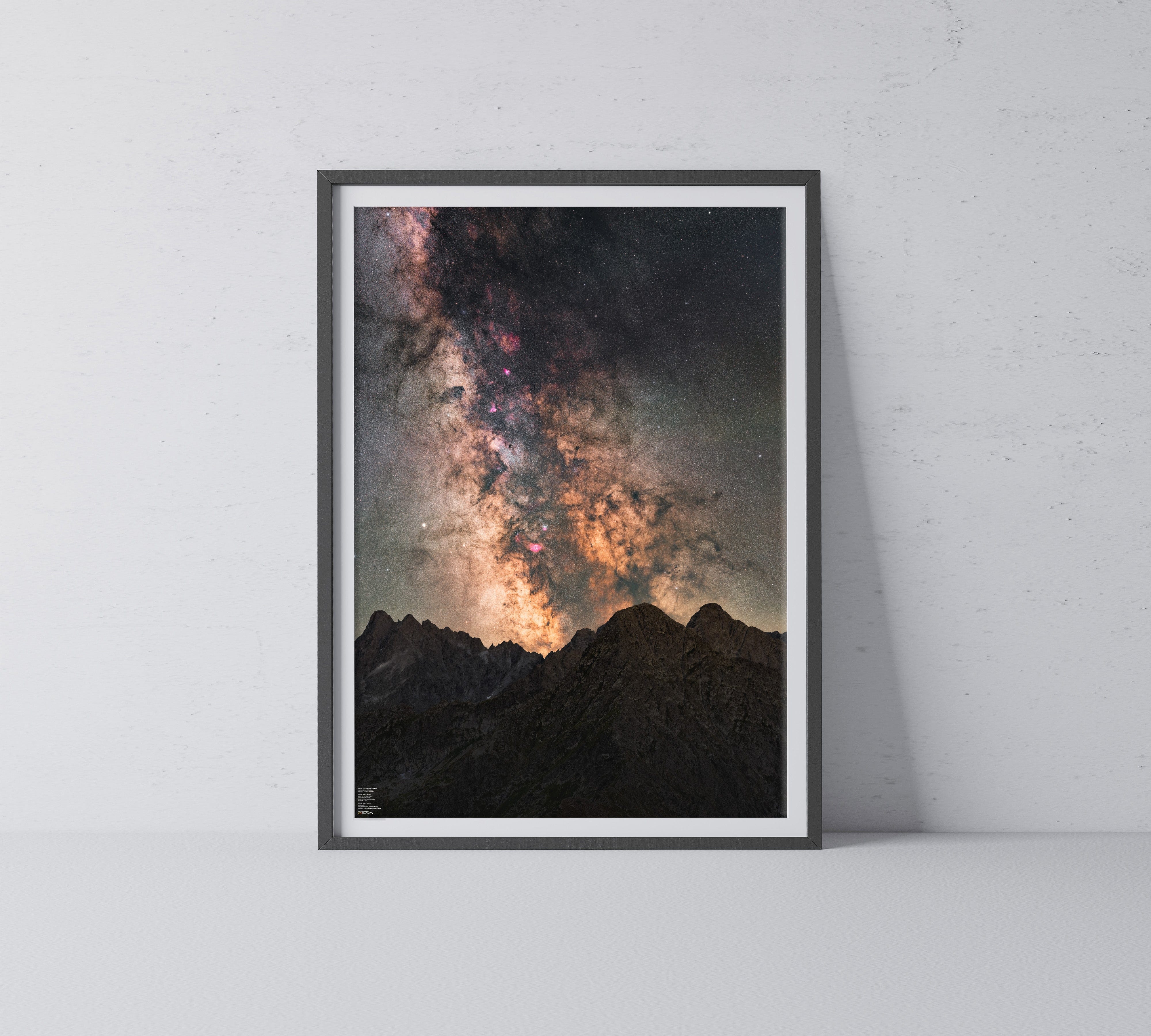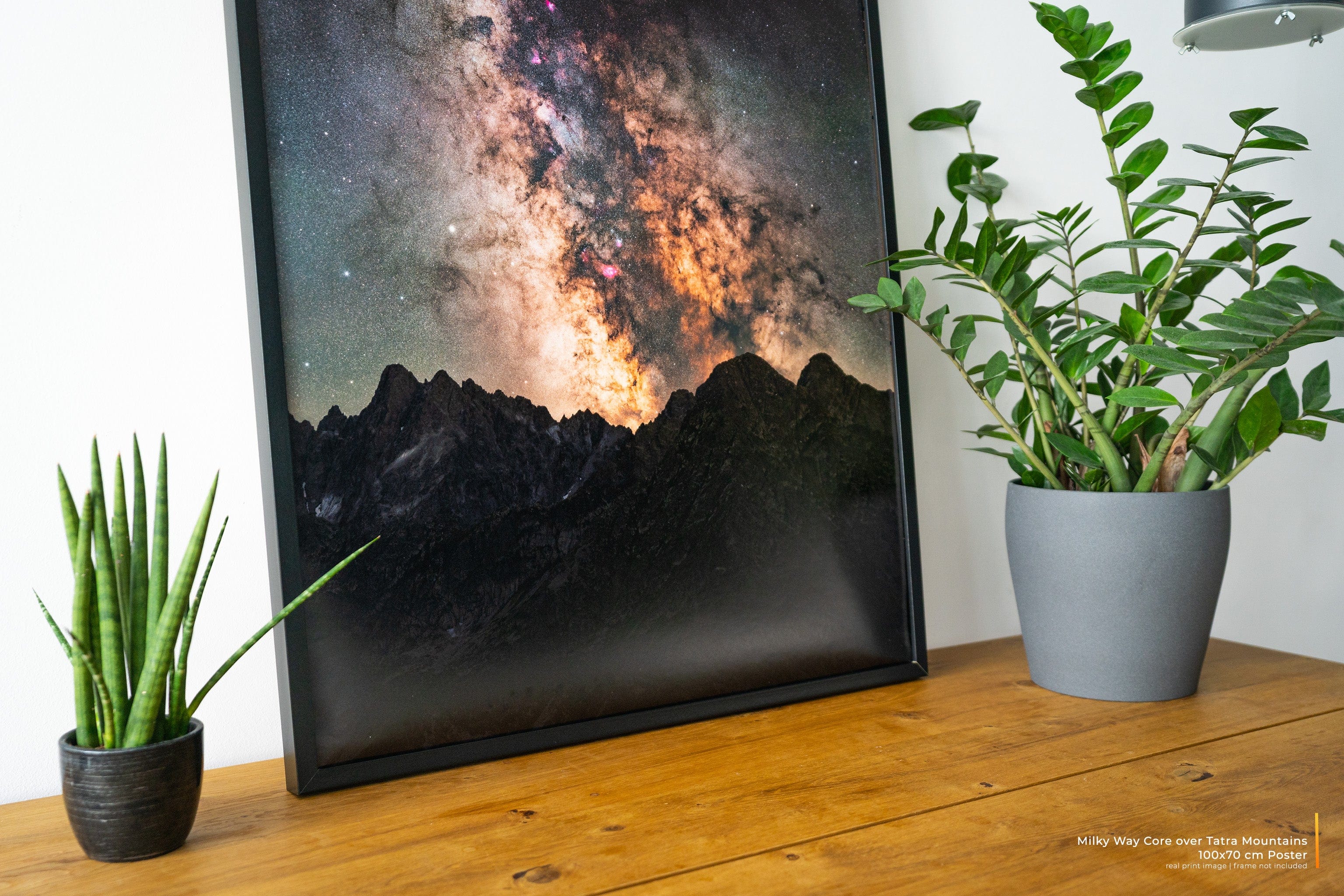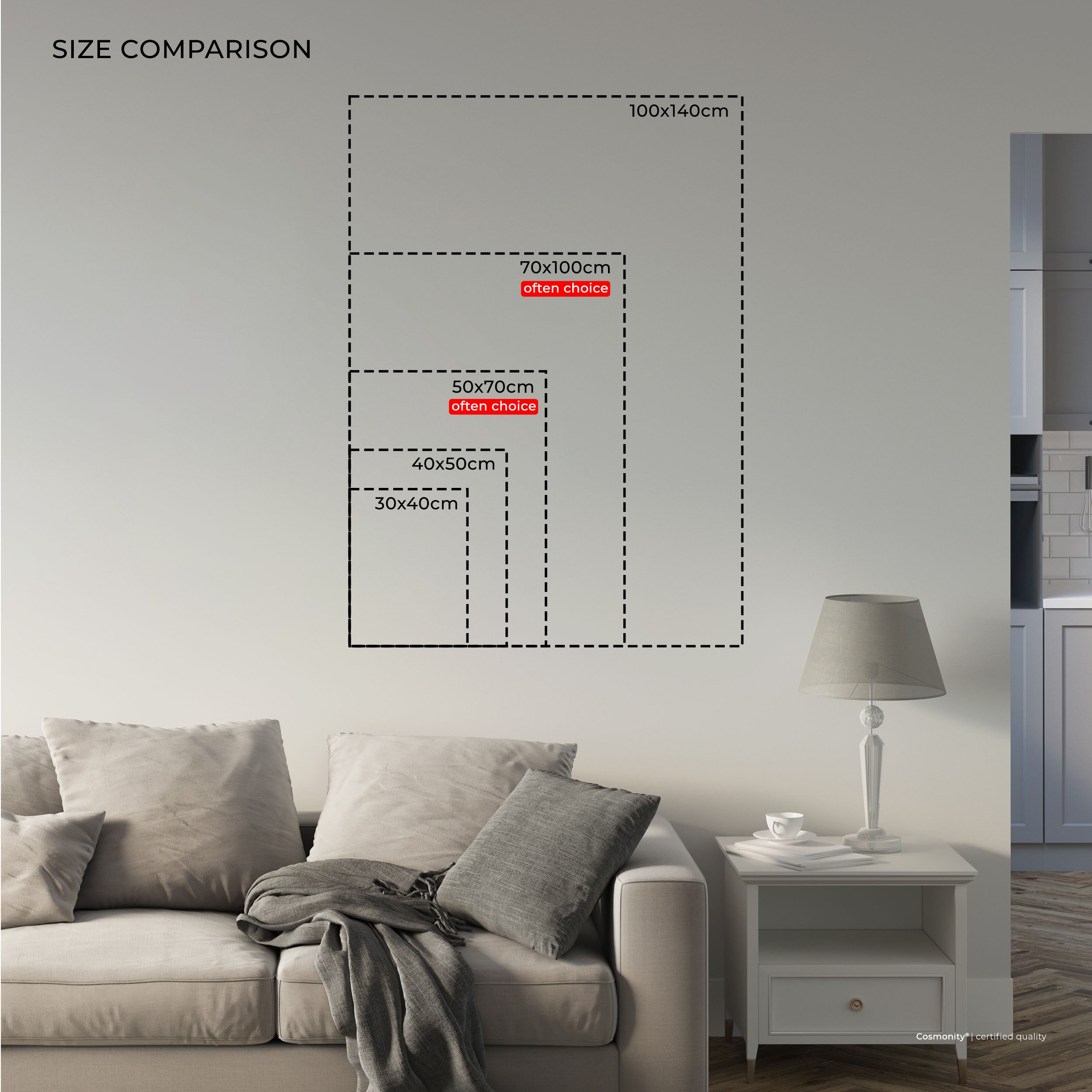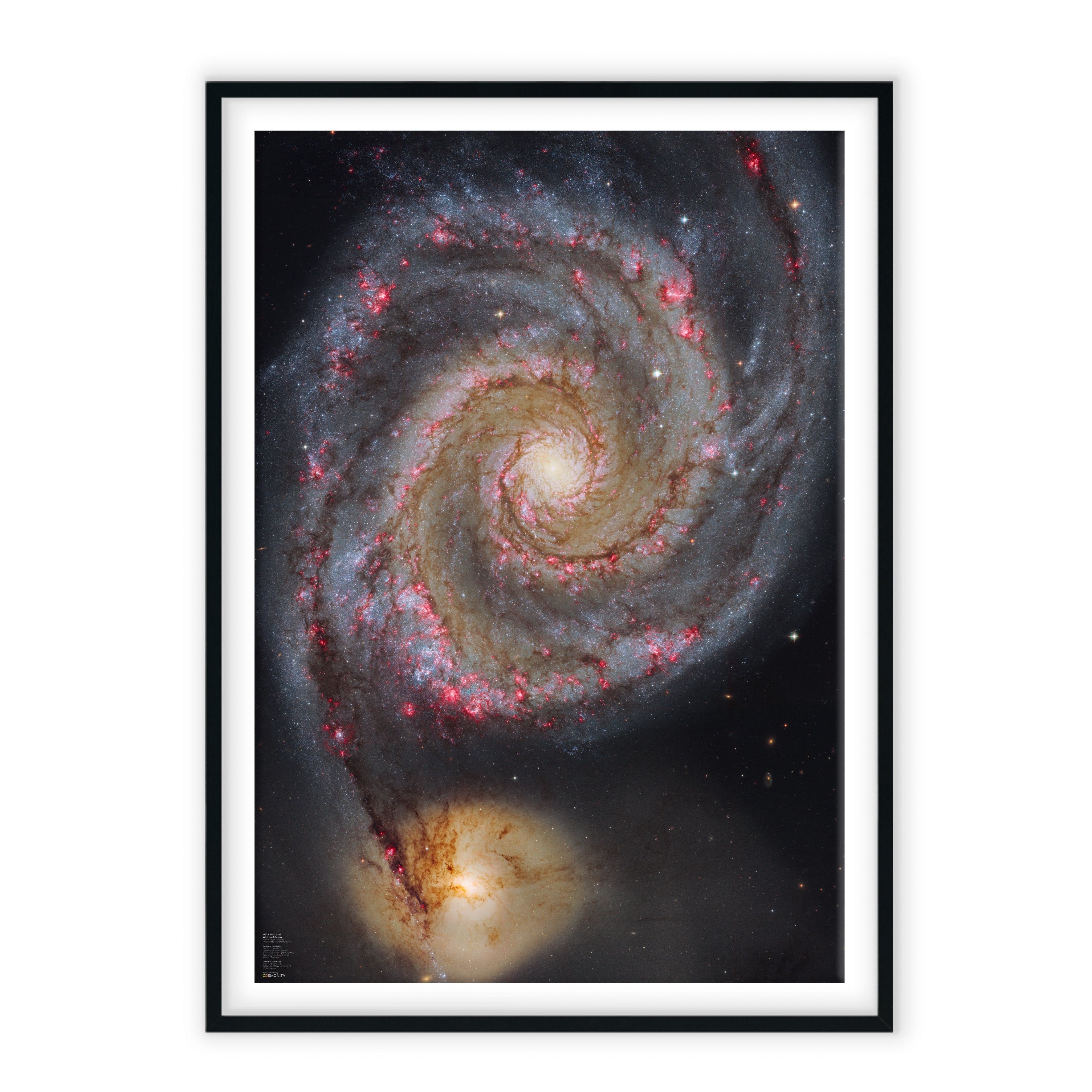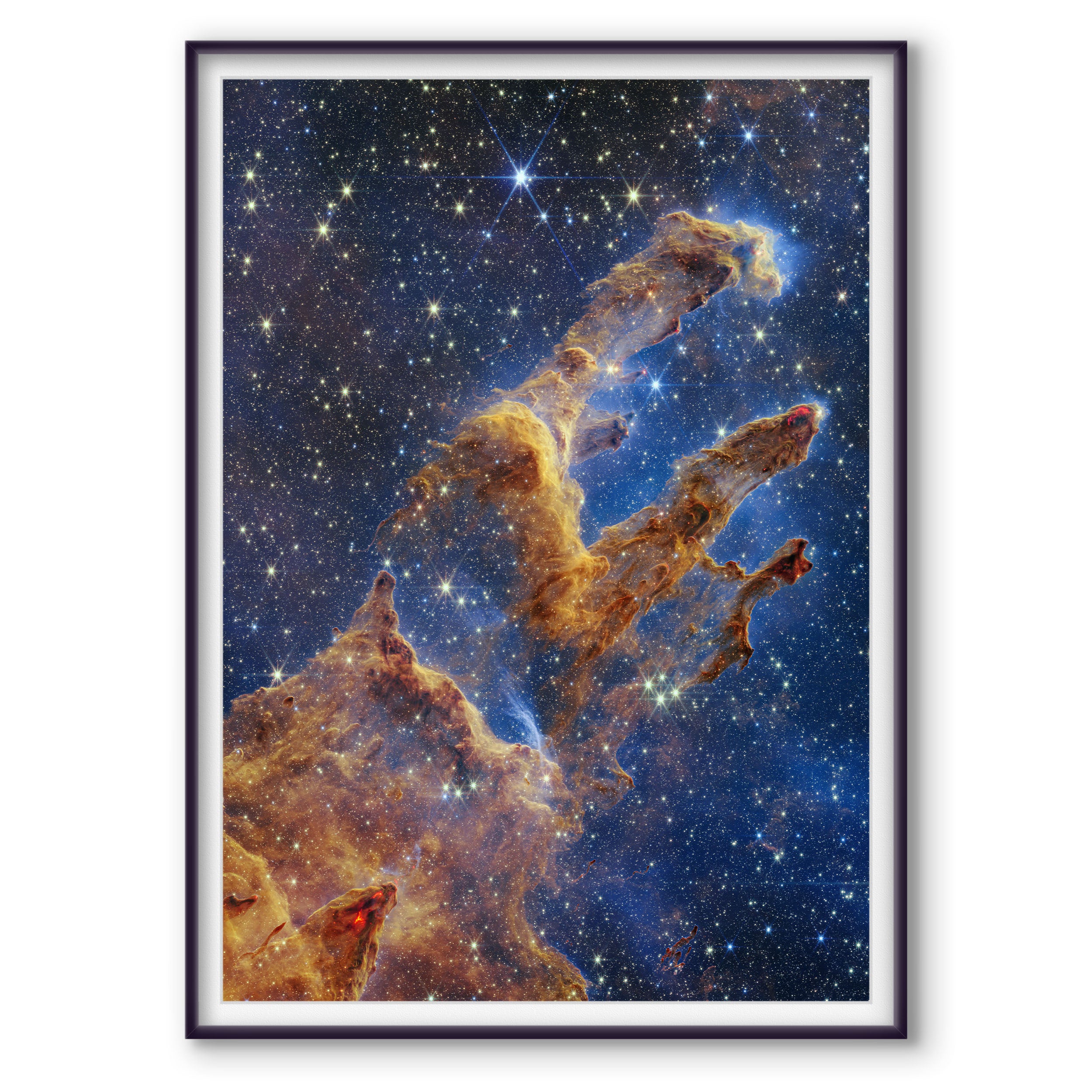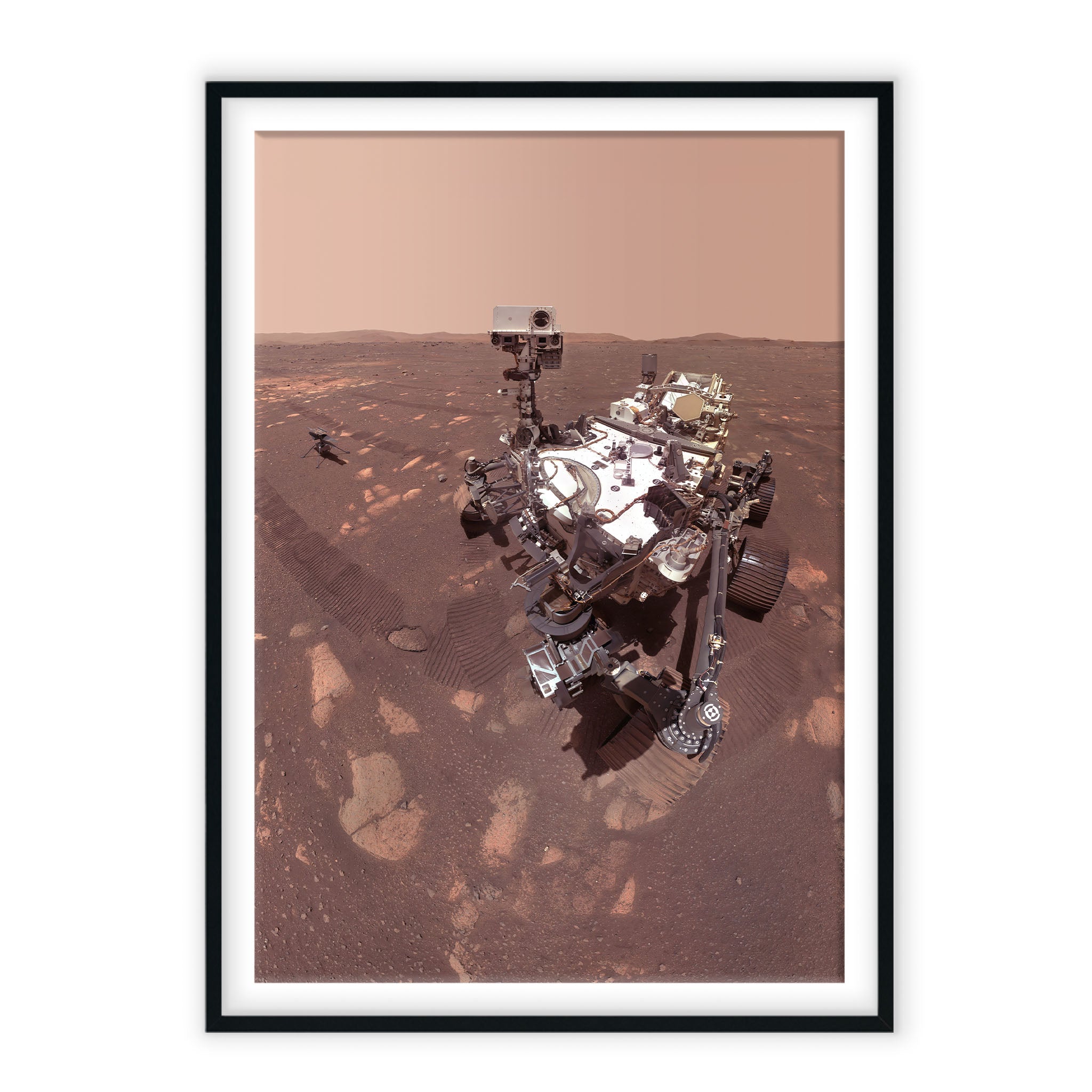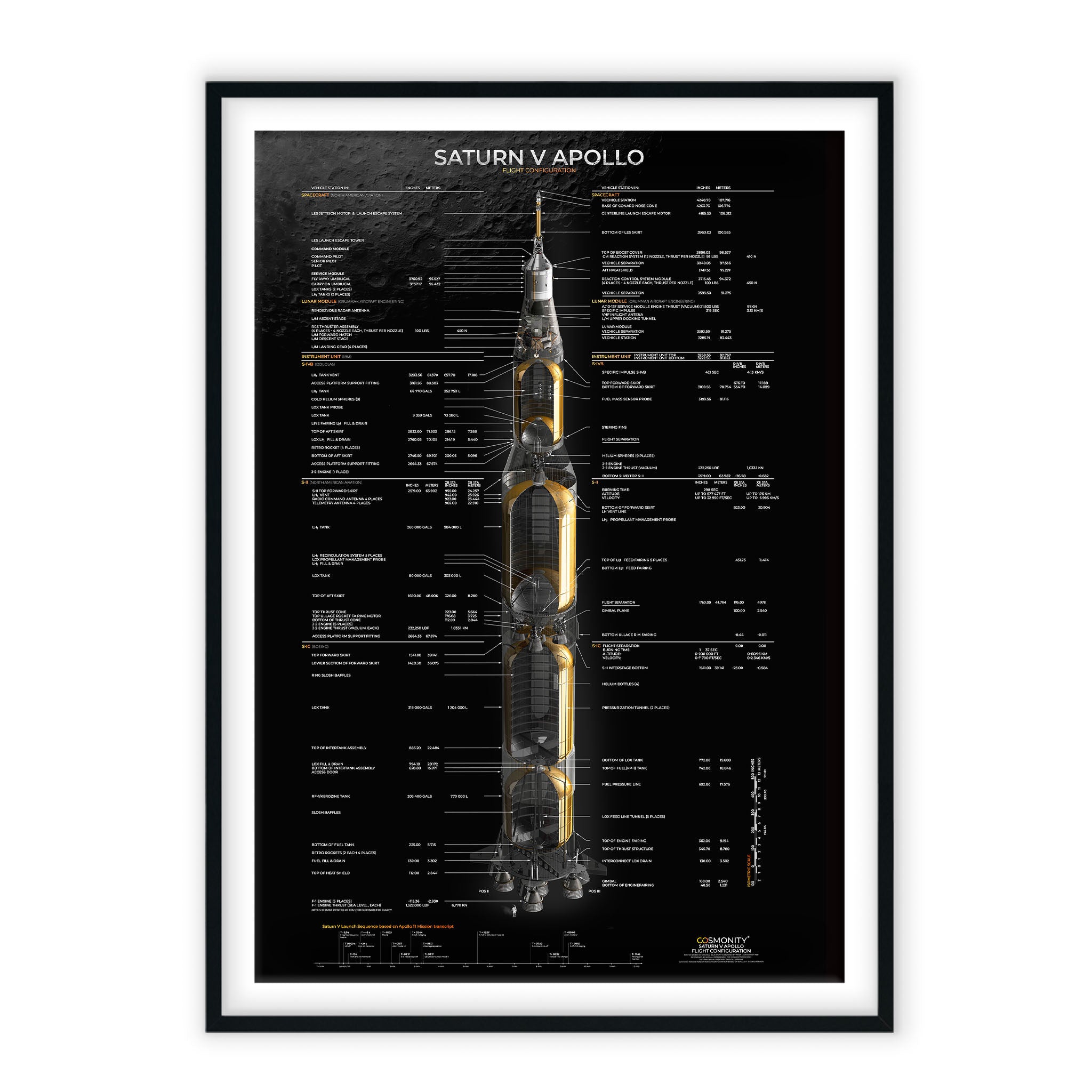The photo shows the Center of the Milky Way low over the peaks of the High Tatras. Thanks to panning, stacking, the use of an equatorial mount and a camera with increased light transmission in the H-alpha emission line, it offers unparalleled quality and a resolution of nearly 200 million pixels, so that even a print several meters long will still retain its quality. It is probably one of the largest astro-landscape images taken in Europe.
History of the photo
The initial plan was to photograph the center of the Milky Way in a panoramic mosaic at 135mm focal length consisting of 16-20 shots of the sky to get a horizontal frame of about 2 by 3 horizontally from Saturn on the left to Scorpio and the entire Rho Ophiuchi nebula complex on the right. I calculated everything to use the whole astronomical night (almost 6h) and finally photographed about 30-35 foreground panels and got an astronomical resolution of over 0. 5 gigapixels.
Wouldn't it be easier to take a single photo?
No. Using longer focal lengths gives us the possibility to increase the amount of light (signal) per unit area, which ultimately translates into much greater detail. In addition, by reducing the resolution, we are able to further reduce noise and get more sharpness. The longer focal length also gives a different surface to project the stars onto the sensor, which translates into their appearance and the lack of need to reduce them artificially in post-production, which translates into a better visual effect.
Why is this so hard?
The night sky photographed at 135mm focal length with a full frame camera looks like sand on a beach, that is, identical in every location. Manual framing and overlapping in successive rows, where each row consisted of 5 panels and each panel consisted of 6 exposures is a really difficult process (you have to remember about the shift of the sky in relation to the foreground, where the Milky Way in August is already behind the meridian (zero meridian) on the celestial sphere and this translates into its fast hiding behind the horizon). Mosaicking the night sky under these conditions is a challenge. Subsequent panels vary greatly in background brightness and contrast due to atmospheric instability, high humidity, light pollution and Airglow phenomenon. Additionally, the source of the problem was the lens itself which generated a large asymmetrical vignette.
Was it successful?
In spite of a number of difficulties a photo was created with the existing lightning detail of the structures of the Milky Way Centre showing an area on the sky of about 25x17 angular degrees where we can see such objects as: globular clusters: NGC 6624, M28, M22, M19, NGC 6401, NGC 6539, Reflective Nebulae; M16, M17, M8, M20, open clusters; M24, M25, M6, M23 and many more.
I am proud to say that this is one of the most accurate astrolandscape photo covering the Centre of our Galaxy taken in Europe.
- Excellent print quality with the Canon imagePROGRAF Pro4100 12 inkjet printer for maximum color sharpness,
- High UV resistance and long colour fastness,
- Professional Solution photo paper that guarantees high-contrast images and deep blacks and provides excellent tone transitions. You can choose between smooth satin paper weighing 240 g/m2 (Poster) and matte, microporous paper weighing 290 g/m2 (Fine Art),
- Environmentally friendly product – we use odourless, water- based inks from LUCIA PRO,
- Delivery of the print in a reusable, safe cardboard tube. At every stage of the development of our products, we strive to remain environmentally conscious, by using as little plastic as possible and minimising the amount of waste generated.

Our print is the perfect work of art for your interior. Find out more about our prints below - Fine Art and Poster.
Product visualizations are just an example of the arrangement of our prints in interiors. Printouts are delivered in the form of sheets rolled into a transport tube without a frame.















